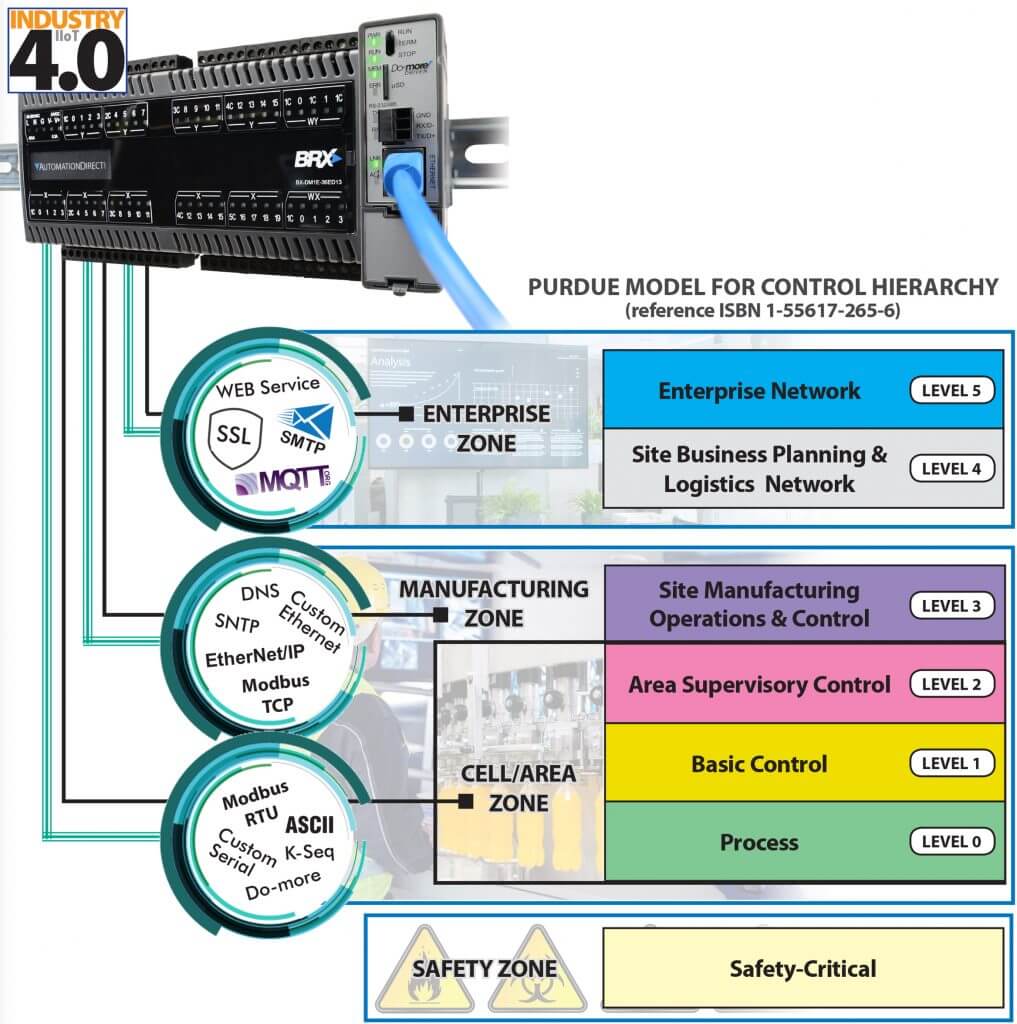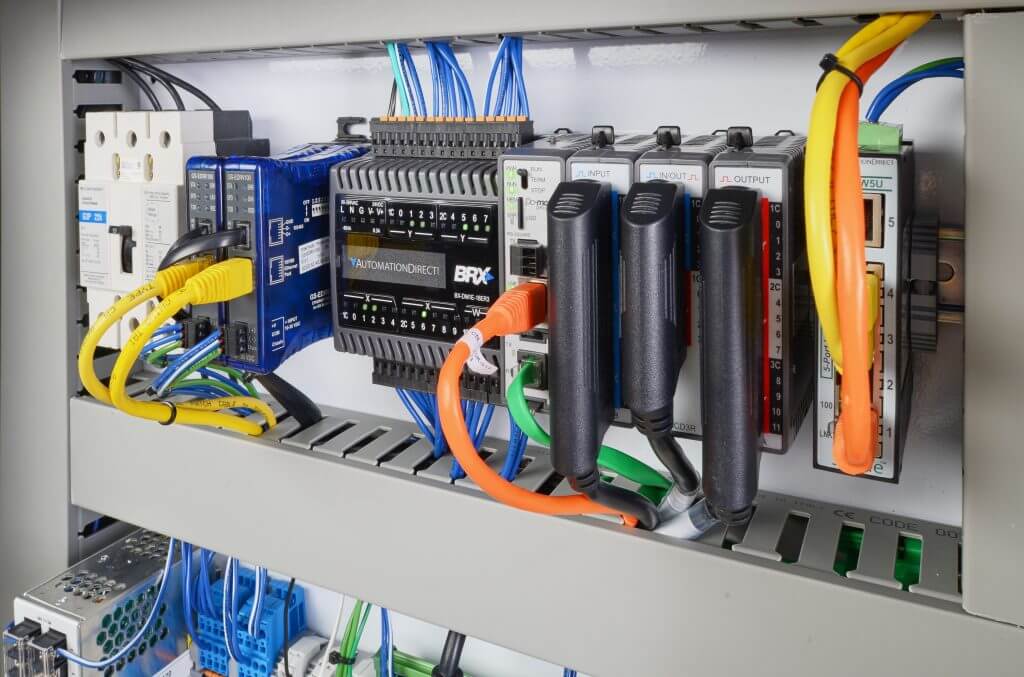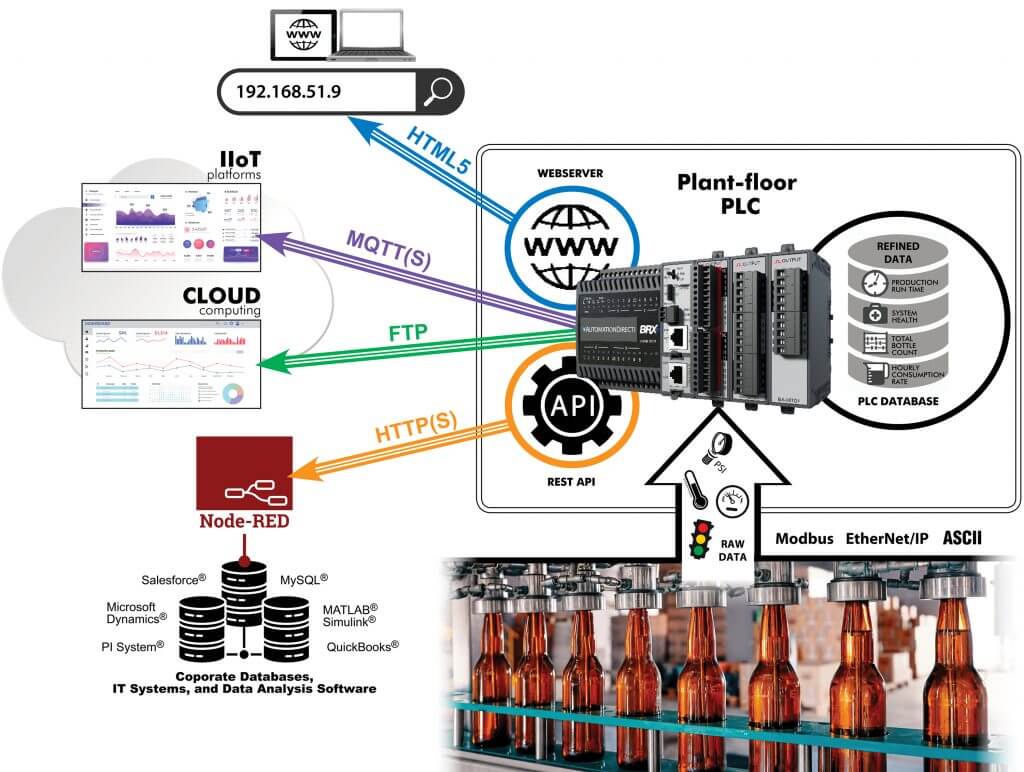Old-fashioned automation architectures suffer from complexity and slow communications. See how today’s PLC advances boost simplicity and performance.

Damon Purvis, PLC Product Manager at AutomationDirect, an article for the April 2021 edition of Machine Design. The article is titled The PLC Breaks Out! and it looks at how modern PLCs can streamline classically rigid architectures to securely and directly access cloud computing resources like Microsoft Azure.
Military personnel and large company employees understand the concepts of a structured hierarchy and a chain of command. For many years, industrial automation architectures have done something similar as they were primarily organized into levels following the Purdue Enterprise Reference Architecture.
Operational technology (OT) like field devices existed at the bottom, while control equipment like programmable logic controllers (PLCs) were in the middle, with enterprise information technology (IT) resources near the top. Each level communicated to the immediately adjacent level above or below.
This model made sense based on the limited capabilities of hardware, software, and networking of the 1990s, but it required a lot of developer effort, custom code, and system resources to configure and maintain.
New and Improved
Some modern PLCs have gained many capabilities not only for advanced high-speed control, but also for sophisticated data handling and communications, enabling them to span many levels of classic control system architectures.

PLCs like the AutomationDirect BRX series incorporate powerful logic and motion control processing, support all the most popular OT communication protocols, and provide many methods for establishing IT connectivity. Users can:
- Store data in the PLC and forward it via FTP.
- Access and display data on any mobile device capable of supporting a web browser by using a web server built into the PLC.
- Transmit data securely using MQTT over TLS.
- Enable authorized remote clients to dynamically request data using a REST API.
Reaching Further into the Cloud
For an even more seamless integration of OT data into IT cloud computing, the AutomationDirect BRX is also certified for native connectivity to Microsoft’s Azure Platform. This means users can use the BRX in new and retrofit machine and automation applications to transmit data directly to the cloud, avoiding complex intermediate layers. Azure offers IoT capabilities like:

- Cosmos DB for data storage.
- Power Apps for easily building low-code solutions.
- Web and mobile visualization.
- Machine learning and analytics to build advanced predictive models.
- Easy access to third-party advanced analytics applications, such as Seeq.
Flexible but Secure
As end users take advantage of these improved PLC capabilities, they must ensure that cybersecurity provisions are suitable. To address this issue, the BRX includes built-in cybersecurity features, such as:
- Closed by default to requests from the outside world.
- On-board storage of username and password credentials managed by OT personnel.
- IP whitelisting to control which external clients can communicate with the PLC.
- Secure communication over TLS when possible.
The processing power incorporated in today’s OT digital devices provides greater capabilities for supporting IoT and analytical endeavors at the enterprise level and in the cloud. Merging proven OT-based technology with carefully coordinated IT-friendly communications and security results in a potent PLC combination. Yesterday’s PLCs were largely incapable of secure data handling, but modern PLCs are cloud-ready and can easily break out of traditional restrictions.
Read more articles about PLCs here!

